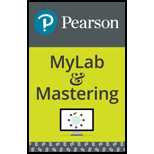
(a)
Interpretation:
The direction of the equilibrium on adding gaseous
Concept introduction:
In a
It is represented as
Also, the concentration of liquid and solid is not considered in writing the expression.
Answer to Problem 46E
When the gaseous
Explanation of Solution
The reaction is given below.
According to the definition of the equilibrium constant,
Since, gaseous
The equilibrium shifts to the left when the gaseous
(b)
Interpretation:
The direction of the equilibrium on adding solid
Concept introduction:
In a chemical reaction, when the rate of both forward and reverse reaction are equal. Then the chemical reaction is known as in equilibrium. In other words, their concentration does not vary with time change. They are reversible in nature.
It is represented as
Also, the concentration of liquid and solid is not considered in writing the expression.
Answer to Problem 46E
When the solid
Explanation of Solution
The reaction is given below.
According to the definition of the equilibrium constant,
The solid
The equilibrium shifts toward left on adding solid
(c)
Interpretation:
The direction of the equilibrium on adding liquid
Concept introduction:
In a chemical reaction, when the rate of both forward and reverse reaction are equal. Then the chemical reaction is known as in equilibrium. In other words, their concentration does not vary with time change. They are reversible in nature.
It is represented as
Also, the concentration of liquid and solid is not considered in writing the expression.
Answer to Problem 46E
When the liquid
Explanation of Solution
The reaction is given below:
According to the definition of the equilibrium constant,
Since, liquid
The equilibrium shifts toward left on adding liquid
(d)
Interpretation:
The direction of the equilibrium on adding solid
Concept introduction:
In a chemical reaction, when the rate of both forward and reverse reaction are equal. Then the chemical reaction is known as in equilibrium. In other words, their concentration does not vary with the time change. They are reversible in nature. It is represented as
Also, the concentration of liquid and solid is not considered in writing the expression.
Answer to Problem 46E
When the solid
Explanation of Solution
The reaction is given below:
According to the definition of the equilibrium constant,
From equation (2) there is no solid
There is no shift in the equilibrium of the reaction when the solid
Want to see more full solutions like this?
Chapter 16 Solutions
EP INTRODUCTORY CHEM.-MOD.MASTERINGCHEM
- At a certain temperature, K=0.29 for the decomposition of two moles of iodine trichloride, ICl3(s), to chlorine and iodine gases. The partial pressure of chlorine gas at equilibrium is three times that of iodine gas. What are the partial pressures of iodine and chlorine at equilibrium?arrow_forwardWrite an equation for an equilibrium system that would lead to the following expressions (ac) for K. (a) K=(Pco)2 (PH2)5(PC2H6)(PH2O)2 (b) K=(PNH3)4 (PO2)5(PNO)4 (PH2O)6 (c) K=[ ClO3 ]2 [ Mn2+ ]2(Pcl2)[ MNO4 ]2 [ H+ ]4 ; liquid water is a productarrow_forward. What does it mean to say that a state of chemical or physical equilibrium is dynamic?arrow_forward
- Consider the equilibrium process depicted in Fig. 17.6. When does the equilibrium state occur?arrow_forwardConsider the system 4NH3(g)+3O2(g)2N2(g)+6H2O(l)H=1530.4kJ (a) How will the concentration of ammonia at equilibrium be affected by (1) removing O2(g)? (2) adding N2(g)? (3) adding water? (4) expanding the container? (5) increasing the temperature? (b) Which of the above factors will increase the value of K? Which will decrease it?arrow_forwardWhich direction of the equilibrium 2NO2(g)N2O4(g)+59.0kJ will be favored if the system is cooled? Explain.arrow_forward
- Show that the complete chemical equation, the total ionic equation, and the net ionic equation for the reaction represented by the equation KI(aq)+I2(aq)KI3(aq) give the same expression for the reaction quotient. KI3 is composed of the ions K+ and I3-.arrow_forwardAt a temperature of 60 C, the vapor pressure of water is 0.196 atm. What is the value of the equilibrium constant KP for the transformation at 60 C? H2O(l)H2O(g)arrow_forwardConsider the system 4NH3(g)+3O2(g)2N2(g)+6H2O(l)H=1530.4kJ (a) How will the amount of ammonia at equilibrium be affected by 1. removing O2(g)? 2. adding N2(g)? 3. adding water? 4. expanding the container at constant pressure? 5. increasing the temperature? (b) Which of the above factors will increase the value of K? Which will decrease it?arrow_forward
- Calculate the equilibrium concentrations that result when 0.25 M O2 and 1.0 M HCl react and come to equilibrium. 4HCl(g)+O2(g)2Cl2+2H2O(g)Kc=3.11013arrow_forwardUse Le Chteliers principle to predict the direction of equilibrium shift in the following equilibria when the indicated stress is applied: a. 2A+B+heatC; some A is removed. b. 2A+B+heatC+D; the system is cooled. c. N2O42NO2; some NO2 is removed.arrow_forwardGiven the following descriptions of reversible reactions, write a balanced equation (smallest whole-number coefficients) and the equilibrium constant expression for each. (a) Nickel metal reacts with carbon monoxide to form nickel tetracarbonyl (Ni(CO)4) gas. (b) Aqueous nitrous acid in equilibrium with hydrogen and nitrite ions. (c) Chlorine gas and bromide ions in equilibrium with liquid bromine and chloride ions.arrow_forward
 Chemistry for Today: General, Organic, and Bioche...ChemistryISBN:9781305960060Author:Spencer L. Seager, Michael R. Slabaugh, Maren S. HansenPublisher:Cengage LearningChemistry: Matter and ChangeChemistryISBN:9780078746376Author:Dinah Zike, Laurel Dingrando, Nicholas Hainen, Cheryl WistromPublisher:Glencoe/McGraw-Hill School Pub Co
Chemistry for Today: General, Organic, and Bioche...ChemistryISBN:9781305960060Author:Spencer L. Seager, Michael R. Slabaugh, Maren S. HansenPublisher:Cengage LearningChemistry: Matter and ChangeChemistryISBN:9780078746376Author:Dinah Zike, Laurel Dingrando, Nicholas Hainen, Cheryl WistromPublisher:Glencoe/McGraw-Hill School Pub Co Chemistry for Engineering StudentsChemistryISBN:9781337398909Author:Lawrence S. Brown, Tom HolmePublisher:Cengage Learning
Chemistry for Engineering StudentsChemistryISBN:9781337398909Author:Lawrence S. Brown, Tom HolmePublisher:Cengage Learning Chemistry: Principles and ReactionsChemistryISBN:9781305079373Author:William L. Masterton, Cecile N. HurleyPublisher:Cengage Learning
Chemistry: Principles and ReactionsChemistryISBN:9781305079373Author:William L. Masterton, Cecile N. HurleyPublisher:Cengage Learning Introductory Chemistry: A FoundationChemistryISBN:9781285199030Author:Steven S. Zumdahl, Donald J. DeCostePublisher:Cengage Learning
Introductory Chemistry: A FoundationChemistryISBN:9781285199030Author:Steven S. Zumdahl, Donald J. DeCostePublisher:Cengage Learning





